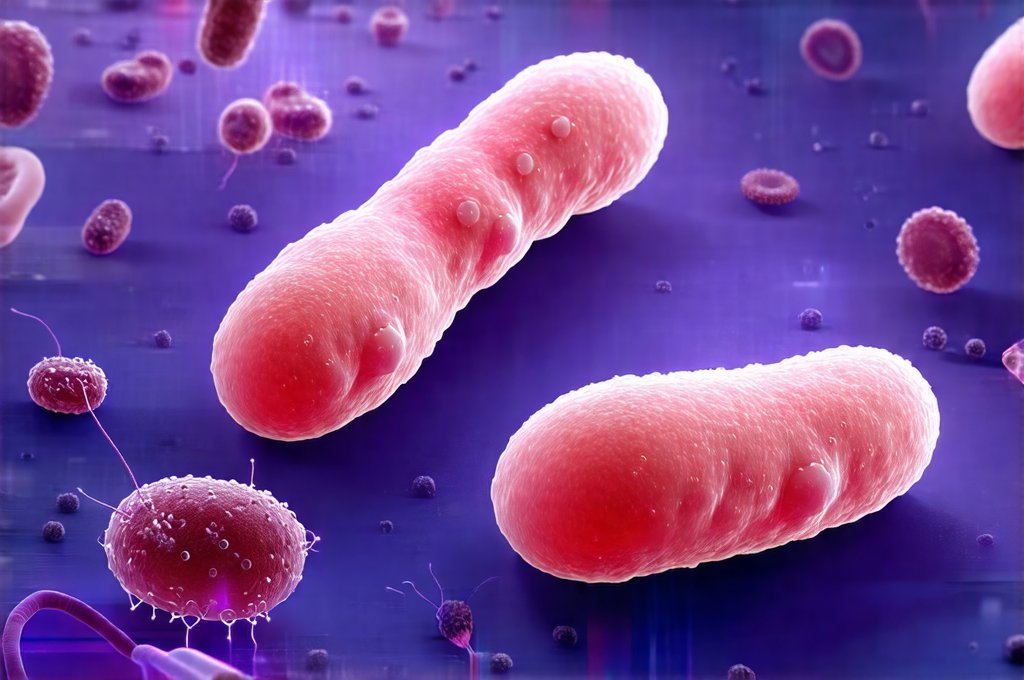The human gut microbiome, once largely overlooked, is now recognized as a pivotal player in overall health and wellbeing. Comprising trillions of microorganisms – bacteria, archaea, fungi, viruses – this complex ecosystem profoundly influences digestion, immunity, mental health, and even chronic disease risk. While the sheer diversity within the gut is astounding, certain bacterial communities stand out for their particularly beneficial roles, and among these, butyrate-producing bacteria (BPB) are gaining significant attention. These microscopic workhorses don’t just passively inhabit our intestines; they actively ferment dietary fiber into short-chain fatty acids (SCFAs), most notably butyrate, a compound with far-reaching physiological effects that extend well beyond the gut itself.
Understanding the science behind BPB isn’t simply about identifying specific species – although that’s important too – it’s about appreciating the intricate interplay between diet, microbial composition, and host health. It’s about recognizing how we can cultivate a thriving community of these beneficial bacteria to optimize our wellbeing from the inside out. The focus has shifted from merely fighting off ‘bad’ bacteria to nurturing the ‘good’ ones, and BPB are definitely at the forefront of that paradigm shift. This article will delve into the fascinating world of butyrate-producing bacteria: what they are, how they function, and the remarkable benefits associated with their presence in a healthy gut microbiome.
The Butyrate Producers: Who Are They?
Butyrate-producing bacteria aren’t a single, homogenous group; rather, it’s a diverse community of microbes capable of performing this crucial fermentation task. While many bacterial genera can produce butyrate to varying degrees, some are consistently more prolific than others. Key players include Faecalibacterium prausnitzii, often considered one of the most abundant and important BPB in a healthy human gut; Roseburia species (like R. intestinalis), known for their high butyrate production efficiency; Eubacterium rectale; and Anaerostipes caccae. It’s crucial to understand that microbial composition varies significantly between individuals, influenced by factors like genetics, diet, geographical location, and antibiotic use.
The process of butyrate production is a fascinating example of microbial metabolism. BPB utilize undigested carbohydrates – primarily dietary fiber – as fuel. Through a series of enzymatic reactions (fermentation), they break down these complex sugars into SCFAs including butyrate, acetate, and propionate. This fermentation isn’t just beneficial for the host; it’s how bacteria themselves obtain energy. The proportion of each SCFA produced varies depending on the bacterial species involved and the specific type of fiber being fermented. F. prausnitzii, for example, is particularly adept at metabolizing resistant starch, a type of fiber that escapes digestion in the small intestine and reaches the colon where it can be fermented by BPB.
It’s important to note that simply having these bacteria present isn’t enough; their activity – their ability to effectively ferment fiber and produce butyrate – is what truly matters. A gut microbiome may contain a seemingly adequate population of BPB, but if dietary fiber intake is insufficient, these bacteria won’t have the substrate they need to function optimally. This highlights the critical role of diet in shaping both microbial composition and activity. The goal isn’t necessarily to increase the absolute number of BPB (though that can be beneficial), but rather to create an environment where they thrive and consistently produce this vital SCFA. Understanding common nutrition myths can help optimize your dietary choices for a healthier gut.
Benefits Beyond the Gut: Systemic Effects of Butyrate
Butyrate’s influence extends far beyond the confines of the digestive system, impacting multiple physiological processes throughout the body. One of its most well-established roles is in colonocyte health. Colonocytes are the cells that line the colon and form the intestinal barrier. Butyrate serves as a primary energy source for these cells, providing up to 70% of their energy needs. This fuels cellular repair and maintenance, strengthening the gut barrier and reducing ‘leaky gut’ – a condition where increased permeability allows harmful substances to enter the bloodstream. A robust gut barrier is essential for preventing inflammation and maintaining immune function.
Beyond its role in colonocyte health, butyrate exhibits potent anti-inflammatory properties. It modulates the immune system by influencing various signaling pathways, reducing the production of pro-inflammatory cytokines (molecules that promote inflammation) and enhancing the activity of regulatory T cells (immune cells that suppress excessive inflammation). This anti-inflammatory effect is believed to play a role in preventing and managing chronic inflammatory diseases such as inflammatory bowel disease (IBD), rheumatoid arthritis, and even some cancers. Butyrate also impacts epigenetic regulation – influencing gene expression without altering the underlying DNA sequence – potentially contributing to long-term health benefits.
Furthermore, research suggests that butyrate may have neuroprotective effects. It has been shown to cross the blood-brain barrier in animal models and influence brain function. Studies indicate that it could improve cognitive function, reduce anxiety and depression symptoms, and even protect against neurodegenerative diseases like Alzheimer’s disease. While more research is needed to fully understand these mechanisms in humans, the emerging evidence suggests a strong gut-brain connection mediated, in part, by butyrate production.
Boosting Butyrate Production: Dietary Strategies
Optimizing BPB activity begins with dietary modifications aimed at increasing fiber intake. It’s not just about how much fiber you eat, but also the type. Different fibers are fermented by different bacteria, leading to varying SCFA profiles. Here are some key strategies:
- Prioritize Resistant Starch: Found in cooked and cooled potatoes, rice, and legumes, as well as green bananas, resistant starch escapes digestion in the small intestine and serves as excellent fuel for BPB.
- Include Diverse Fiber Sources: Aim for a wide variety of fruits, vegetables, whole grains (oats, barley, quinoa), and legumes to provide different types of fiber that support diverse microbial communities.
- Prebiotic Foods: Incorporate foods containing prebiotics – non-digestible fibers that selectively promote the growth of beneficial bacteria, including BPB. Examples include garlic, onions, leeks, asparagus, and chicory root.
Beyond simply increasing fiber intake, it’s important to do so gradually. A sudden increase in fiber can lead to bloating, gas, and discomfort. Start with small amounts and gradually increase your intake over time to allow your gut microbiome to adapt. Staying adequately hydrated is also crucial, as fiber absorbs water and requires sufficient fluid for proper digestion. Consider the impact of fermented foods on your overall health and microbiome diversity.
The Role of Probiotics & Synbiotics
While dietary changes are paramount, probiotics and synbiotics can play a supporting role in boosting butyrate production. Probiotics are live microorganisms that, when administered in adequate amounts, confer a health benefit on the host. While not all probiotics directly produce butyrate themselves, certain strains can enhance the growth of existing BPB or improve their fermentation efficiency. Look for strains specifically researched to promote butyrate production such as some Bifidobacterium and Lactobacillus species.
Synbiotics, on the other hand, combine probiotics with prebiotics, providing both the beneficial bacteria and the fuel they need to thrive. This synergistic approach can be more effective than using either component alone. However, it’s crucial to remember that probiotics aren’t a one-size-fits-all solution. The effectiveness of a specific probiotic strain depends on individual factors and gut microbiome composition. It is important to choose well-researched strains from reputable sources. You can learn more about probiotics for frequent nausea in dedicated research.
Future Directions & Research
The field of butyrate production and its impact on health is rapidly evolving. Ongoing research is focused on several key areas: 1) Personalized nutrition strategies tailored to individual microbiome profiles, aiming to optimize dietary recommendations for maximizing BPB activity; 2) Developing novel prebiotic compounds that selectively promote the growth of specific BPB strains; 3) Investigating the potential of fecal microbiota transplantation (FMT) – transferring a healthy gut microbiome from a donor to a recipient – as a therapeutic intervention for conditions associated with low butyrate production and dysbiosis.
Furthermore, researchers are exploring ways to directly deliver butyrate to the colon using targeted delivery systems, bypassing the challenges of absorption in the upper gastrointestinal tract. While still in its early stages, this approach holds promise for treating localized gut inflammation and improving treatment outcomes. Ultimately, understanding and harnessing the power of butyrate-producing bacteria represents a significant step towards preventative medicine and personalized healthcare. The future of gut health is undoubtedly intertwined with the microscopic world within us, and BPB are poised to play a central role in that future. Understanding potential issues like GERD and pressure can help identify underlying causes for discomfort. It’s also important to address nutrition myths about nausea, as these can hinder proper care. Finally, exploring the science behind gluten will give you deeper insights into gut health.


















